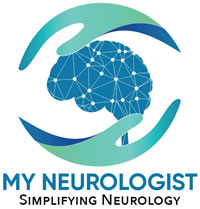It is a condition resulting from malfunction of the ulnar nerve.
What is ulnar nerve?
It is a nerve traveling from the armpit side of the arm traveling behind the bony prominence of elbow (the so-called funny bone) to the hand. In the hand, it is involved in sensations to the fifth digit (or the pinky), and the adjacent half of the ring finger. Its motor part supplies many hand muscles.
What exactly happens in ulnar neuropathy?
In this condition, the ulnar nerve is injured. The most common site of this injury is around the elbow, while the second most is at the wrist level. Nerve is like an electric wire; the injury may damage its coating, or ultimately its inside fibers. This nerve is particularly at risk of injury at elbow as it passes over bony structures and is relatively less protected (limited fat and muscle cover).
What are the symptoms of ulnar neuropathy?
Its symptoms are pain, numbness, tingling, and weakness. Location of symptoms can be anywhere from elbow to the medial side of forearm to the hand, especially the pinky. If sufficiently affected, many hand muscles can be weak resulting in weakened hand grip.
How is ulnar neuropathy diagnosed?
With its typical symptoms, and sometimes examination findings, the diagnosis can be obvious. But its definite diagnosis requires a test called EMG/NCS, or the electromyogram and nerve conduction studies. In this test, like an electrician checking a circuit, different nerves of the arm and the hand, from neck to the fingertips are checked to find the exact location, severity, and the nature of problem. It is important to mention that EMG/NCS is a special test and not every lab provides same amount of data. Incomplete and poorly done test can easily miss the diagnosis or provide incorrect information leading to wrong diagnosis. To make things complicated, most physicians ordering this test are not trained to interpret it.
Are there different levels of ulnar neuropathy?
Levels are defined for purpose of understanding and to decide about management. Usually, it is categorized as mild, moderate, and severe (and in-between), based upon EMG/NCS findings.
What causes ulnar neuropathy?
Its most common cause is heavy physical activity, more than a person’s body could handle. The injury may occur from excessive stretching even with a single activity, repetitive heavy physical work or sports, or direct physical trauma (e.g., falling). There are many other non-mechanical causes such as metabolic (diabetes), auto immune or infectious.
How is ulnar neuropathy treated?
Mechanical causes: Mild cases require rest and may be a few days of common pain medicine. Avoiding elbow flexion during sleep can be helpful or wear a wrist splint if the injury is at wrist level. Further treatment depends upon the location of injury, its cause and the nature. The common site of injury is around elbow where a surgical treatment is available. This surgery is sometimes called ulnar transposition surgery, when the nerve is brought in front of the elbow (transposed) to avoid further damage. It is done under local anesthesia and can leave a relatively good-sized scar on the medial side of elbow. In carefully selected cases, it can help to resolve symptoms and regain hand strength.
Non-mechanical causes: The treatment depends upon the cause, and surgery may not help.
What may be the cause of failure of surgery for ulnar neuropathy?
- Wrong location, e.g., the location of problem may not be at elbow, or the patient may have a problem at multiple levels (the neck and the elbow – the so-called “double-crush” syndrome).
- Wrong cause, surgery may not work if the cause of neuropathy is a metabolic condition (e.g., diabetes mellitus), infectious or an auto-immune disorder.
- Wrong expectation, the recovery may be partial if significant nerve fibers are already lost.
How to decide if surgery is the right option or not?
This requires complete evaluation with proper history, examination, and a good quality EMG & nerve conduction study. I recommend surgery in select cases where the diagnosis is well-defined, including its mechanical cause, and patient continues to suffer or worsen despite non-surgical treatment.
Where can I get more information about ulnar neuropathy?
American Society of Neurological Surgeons
American Society of Orthopedic surgeons
American Society of Physical Medicine and Rehabilitation


Leave a Reply
Your email is safe with us.
You must be logged in to post a comment.